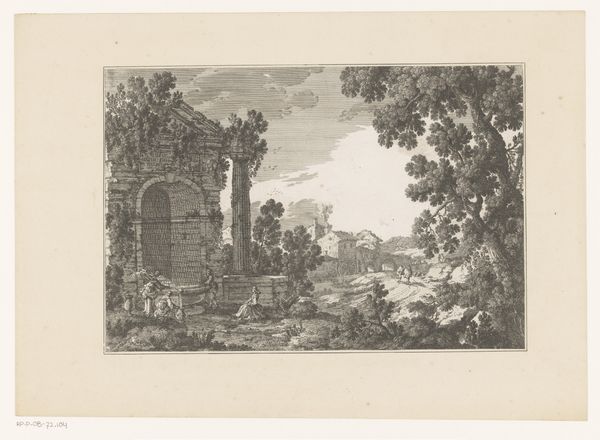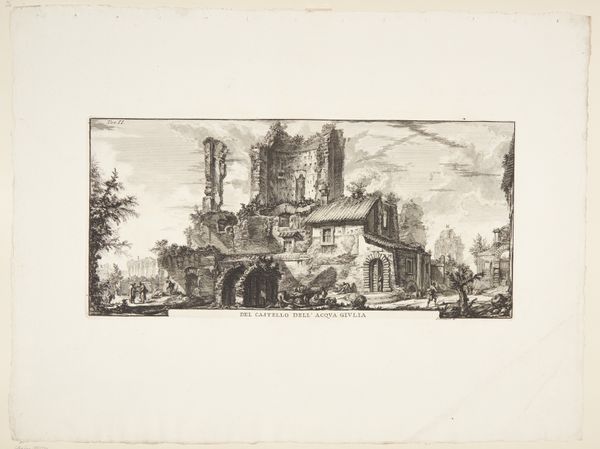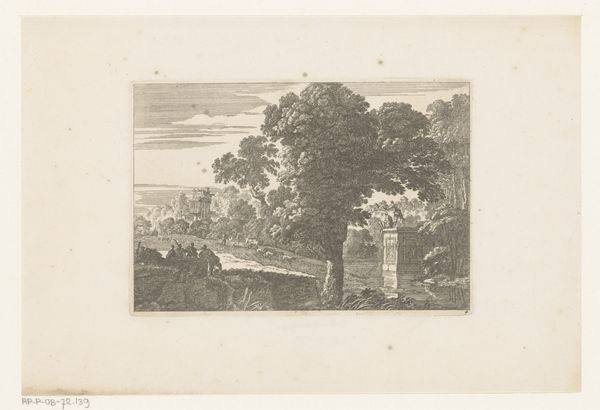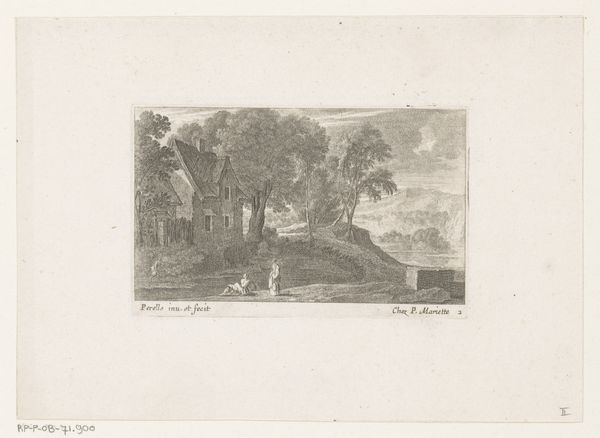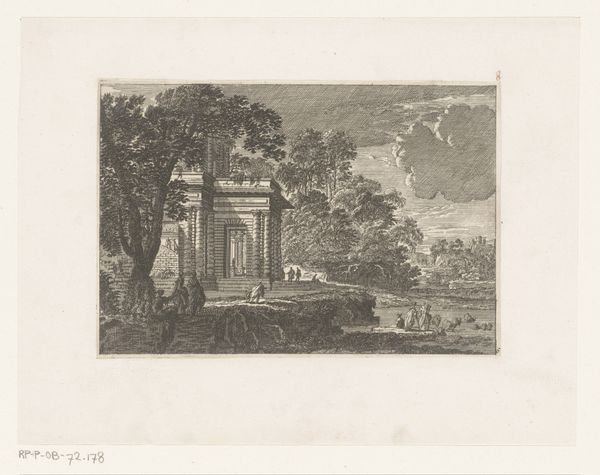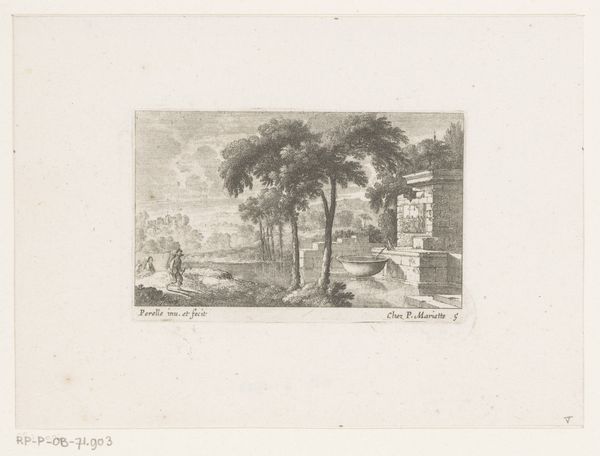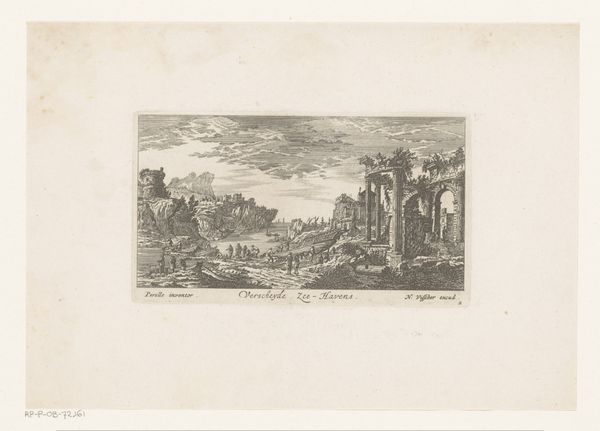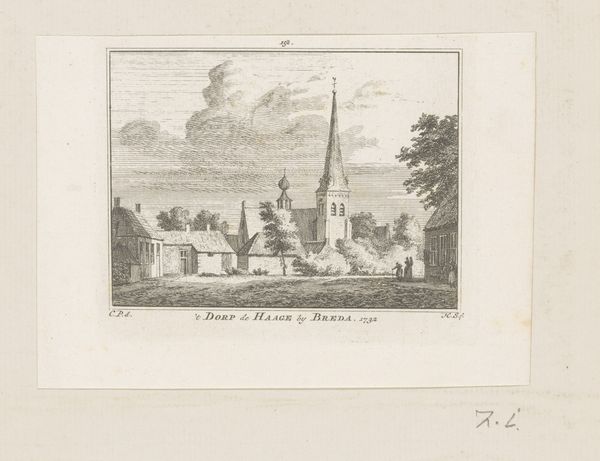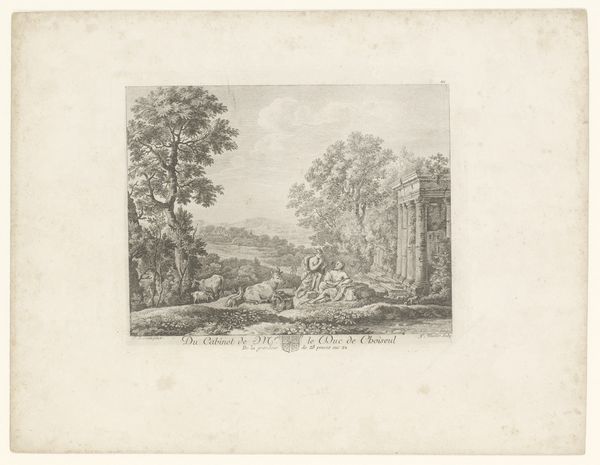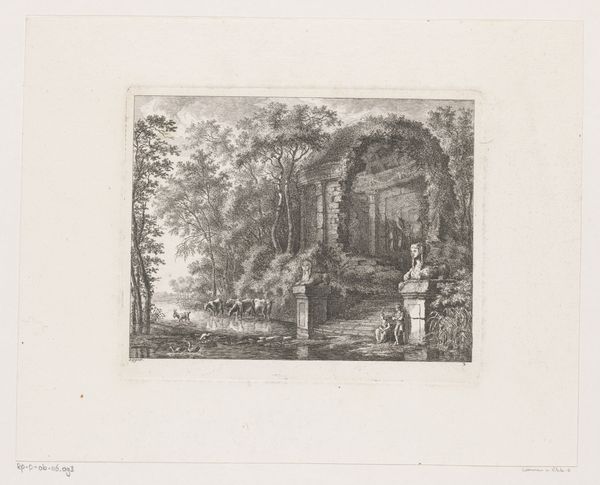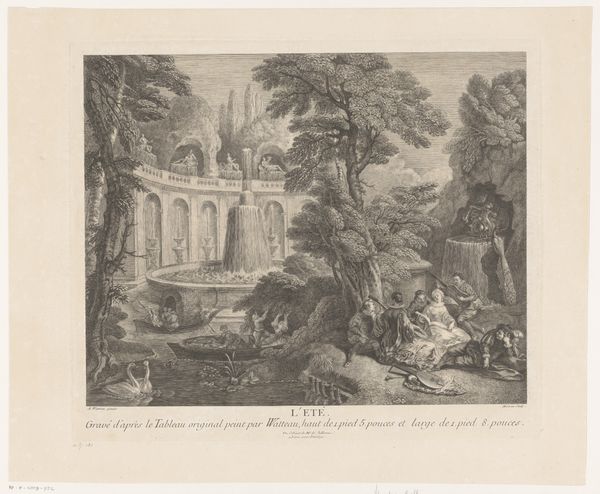
print, etching, ink, engraving, architecture
#
baroque
#
ink paper printed
# print
#
etching
#
pencil sketch
#
old engraving style
#
landscape
#
ink
#
engraving
#
architecture
Dimensions: height 126 mm, width 184 mm
Copyright: Rijks Museum: Open Domain
Nicolas Perelle made this etching, “Wooded Landscape with Antique Ruins,” sometime in the 17th century. In this period, we see the rise of landscape painting as a popular genre, reflecting a changing relationship between humans and nature. Perelle's work isn’t simply about representing the natural world; it's about constructing an ideal vision. The ruins, likely Roman, evoke a sense of historical depth and cultural prestige. This idealized vision of the past served a purpose: it gave a sense of legitimacy to the present. By associating themselves with the grandeur of the Roman Empire, the elite classes of 17th-century Europe sought to reinforce their own power and status. Studying estate records, travel journals, and architectural treatises helps us understand how people like Perelle and their patrons saw their place in the world. Art like this wasn't just decoration; it was part of a larger project of social and cultural legitimation.
Comments
No comments
Be the first to comment and join the conversation on the ultimate creative platform.
